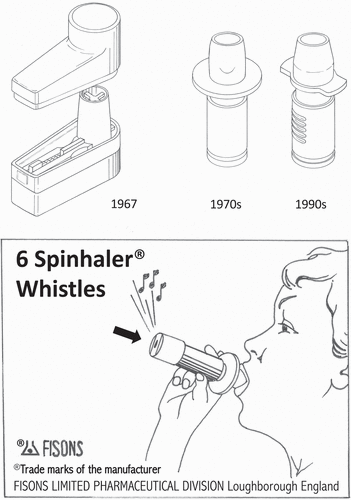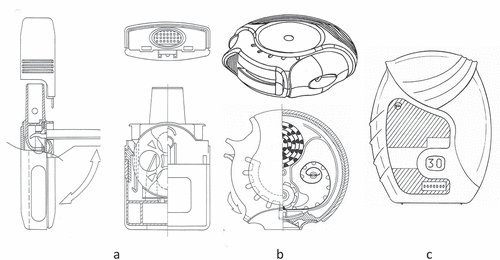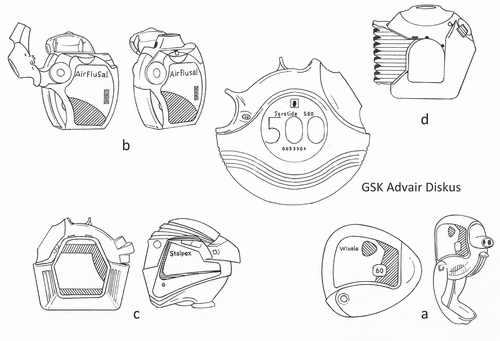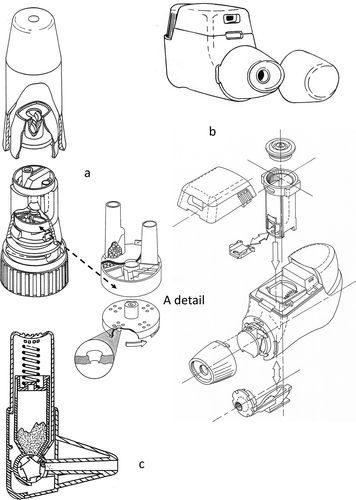Figures & data
Figure 1., Early prototype of the Spinhaler (Fisons), the first modern dry powder inhaler from 1967 (Museum of Plastics, Bournemouth, UK) compared with two later versions (1970 and 1990s) and a whistling version giving feedback about the inspiratory flow rate. The principle of operation of all versions is the same.

Figure 3. GSK multiple unit-dose (blister) inhalers with Diskhaler (a), Diskus or Accuhaler (b) and Ellipta (c).

Figure 4. GSK originator and generic Advair Diskus multiple unit-dose inhalers with Mylan Wixala Inhub (a), Sandoz AirFluSal Forspiro (b), Glenmark Salflutin and Stalpex (c) and Neutec Airmaster (d).

Figure 5. Examples of the first-generation multi-dose reservoir inhalers with AZ Turbuhaler (a), Meda Novolizer (b) and Orion Easyhaler (c) having different metering principles with cavities in a rotating disk, movable slide and revolving cylinder respectively.

Table 1. Some formulation and particle engineering innovations in dry powder inhalation.
Figure 6. Orders of magnitude for the dose fractions available for total lung deposition at a moderate flow rate (A: black and shaded sectors), the averaged rates of correct inhaler technique (B, black sector) and of good adherence to the therapy (C, black sector). The figure shows the improvements that are (still) possible for all three aspects of inhalation, in spite of the increase in lung deposition achieved in the period from 1990 on by approximately a factor four (6A). Rates for correct inhaler use and good adherence have been found to depend particularly on patient’s age, the type of inhaler and the definitions used for incorrect inhalation technique and non-adherence scores [Citation93,Citation110–113]. In most studies, critical error frequencies are higher for MDIs than for DPIs [Citation93]. The white (in A, B and C) and gray sectors (in B and C) represent the room for improvement of DPI therapy.
![Figure 6. Orders of magnitude for the dose fractions available for total lung deposition at a moderate flow rate (A: black and shaded sectors), the averaged rates of correct inhaler technique (B, black sector) and of good adherence to the therapy (C, black sector). The figure shows the improvements that are (still) possible for all three aspects of inhalation, in spite of the increase in lung deposition achieved in the period from 1990 on by approximately a factor four (6A). Rates for correct inhaler use and good adherence have been found to depend particularly on patient’s age, the type of inhaler and the definitions used for incorrect inhalation technique and non-adherence scores [Citation93,Citation110–113]. In most studies, critical error frequencies are higher for MDIs than for DPIs [Citation93]. The white (in A, B and C) and gray sectors (in B and C) represent the room for improvement of DPI therapy.](/cms/asset/932c1ce6-15e3-4a41-8367-d39379c28c8e/iedd_a_2112570_f0006_b.gif)

